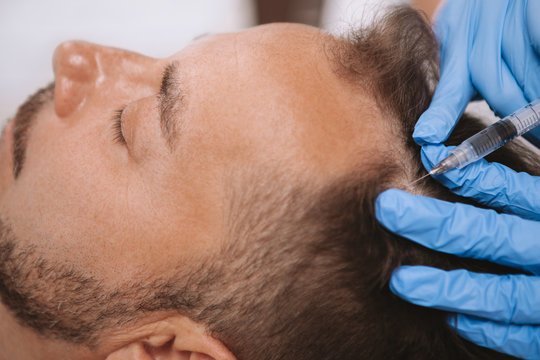
Hair Growth Timeline After a Hair Transplant Surgery
Getting a hair transplant is a big step for anyone facing hair loss. It brings new hope, but it also comes with a big question: “When will I see new hair grow?” The truth is, hair growth after a transplant doesn’t happen overnight. It follows a natural cycle, and knowing what to expect at each stage can help you stay patient and positive throughout the journey.
Let’s break down what really happens in the months following a hair transplant—and how your hair gradually comes back to life.
Month 1: Healing Begins, Hair May Shed
In the first few weeks after the transplant, it’s common to experience shedding of the transplanted hairs. This can be surprising or even worrying, but it’s a completely normal part of the process called “shock loss.”
- What’s happening? Your scalp is healing. Small scabs may form around each graft and typically fall off within 10-15 days.
- Why is hair shedding? The hair follicles are adjusting to their new environment. They enter a resting (telogen) phase and shed old hair shafts so new ones can grow.
- What you should do: Be gentle with your scalp, avoid scratching, and follow your surgeon’s instructions. Avoid strenuous exercise and direct sunlight.
Although there’s no visible growth yet, your hair follicles are rooting themselves and preparing for new growth beneath the surface.
Months 2-3: Resting Phase, New Hairs Prepare to Sprout
During months two and three, most patients won’t see much change—at least not on the outside.
- Your hair is in a dormant stage. The new follicles are under the skin, resting and recovering.
- Around the end of the third month, you may begin to notice fine baby hairs emerging from the scalp. This is a sign the follicles are waking up!
Stay patient—this is the calm before the storm of new hair growth.
Months 4-6: New Growth Starts to Show
Now the excitement begins! By month four, visible signs of growth become noticeable for most people.
- Fine, thin hairs begin to grow and gradually become more pigmented and textured.
- By month six, about 40% to 50% of the final hair density is usually visible.
- You’ll notice changes in your hairline, thickness, and coverage in previously thin areas.
Tip: A healthy diet and good scalp care during this time can help support stronger regrowth.
Months 7-9: Hair Becomes Thicker and Fuller
This is when things really start to take shape. Between months seven and nine:
- Hair strands become denser and more structured.
- The transplanted hairs start to blend with the natural hair.
- Bald spots and thinning patches become less visible.
At this point, your confidence will likely begin to return, and styling your hair will start to feel fun again.
Months 10-12: Final Growth and Results Settle In
By the end of the first year:
- Around 80-90% of the final results will be visible.
- Hair will look and feel natural, strong, and healthy.
- Minor gaps or thinner spots may continue to fill in slowly.
Every individual heals differently, so full results may vary slightly. Some people continue to see improvements even up to 15 months post-surgery.
Factors That Affect Hair Growth After Transplant
While the timeline above applies to most people, a few things can affect your growth rate:
- Scalp health – Healthy skin promotes better healing.
- Nutrition – Eating protein-rich, balanced meals boosts hair quality.
- Post-surgery care – Following doctor’s instructions improves outcomes.
- Genetics – Some people naturally grow hair faster than others.
In Summary
RQC Hair transplants Clinic offer a long-term, natural-looking solution to hair loss, but patience is key. Most of the action happens under the skin in the early stages, and visible results appear gradually over 6–12 months. Understanding the timeline helps you avoid unrealistic expectations and gives you confidence that your new hair is coming—in time.
Stick with your aftercare routine, give your body what it needs, and trust the process. Your new hair is worth the wait.
